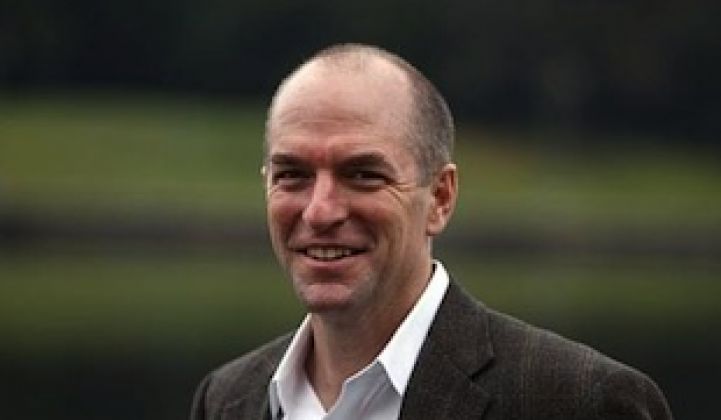John Woolard, the President and CEO of CSP pioneer BrightSource Energy, kicked off this year's Cleantech Group meeting in San Francisco this morning.
He was introduced by Stephan Dolezalek, one of the initial investors in BSE and cleantech lead at VantagePoint Capital Partners.
Dolezalek suggested that had Woolard known the challenges that lay ahead of him when he took the job, he might have reconsidered. In addition to convincing venture capitalists to throw in a few hundred million dollars, Woolard has had to raise billions in project finance from the likes of Goldman Sachs, CitiCorp, NRG, and Abengoa -- while enduring hostile opposition from environmentalists, tortoises, and the Los Angeles Times.
On the weekends, Woolard has spent his time standing up to a hostile U.S. Congress, while simultaneously managing the half of his company located in Israel. He has worked with ex-presidents, the Senate, the CPUC, and the DOE.
Dolezalek called Woolard one of the brightest minds and hardest workers in the cleantech world.
Woolard discussed the macroeconomic forces at play in today's energy environment: the rise of natural gas, the decline of coal and the imminent overbuild of natural gas power plants.
But Woolard tried to bring the focus onto the root problem that BSE is trying to solve.
"The problem we're trying to solve is [... how to] decarbonize the power supply and maintain system reliability at the lowest total cost to customers."
Woolard sees the necessity of flipping a world now running on about 80 percent fossil fuels to a world using 80 percent zero-carbon sources in order to reach the (already compromised) 450-ppm carbon milestone. Woolard said that to stabilize at 450, the flip has to happen fast. Woolard said that "we'll have to build a gigawatt a day" of some zero-carbon power source. (BrightSource recently announced a partnership with Spain’s Abengoa Solar [PINK:ABGOY] to jointly develop the two-tower, 500-megawatt Palen Solar Electric Generating System, using BSE's second-generation 750-foot-tall towers.)
"We have to put PV on every rooftop," said Woolard, adding that "that only solves 10 percent of the problem." He continued, "We need to make power more fungible."
Intermittency also remains a problem, according to Woolard, who claimed that Spain's grid operator has limited the size of the renewable projects it works with to those of fewer than 20 megawatts.
Intermittency is far less a problem for BrightSource Energy, which offers technology that can run as a hybrid natural gas/CSP plant and provide "easy-to-integrate AC power" to the grid (although we also recently reported on the surprisingly low costs of integrating wind and solar onto some grids). The hybrid produces a flat power curve, according to Woolard.
Woolard notes that each picture-window-sized heliostat mirror, installed at the rate of one per minute at the $2.2 billion Ivanpah project, is capable of providing power to approximately one home, without the "hidden integration costs to the consumer" that come with wind and solar.
Unsurprisingly, Woolard said that "reliable power is best done with solar thermal." Woolard did not reveal the Ivanpah PPA price in its contracts with PG&E and SCE.



